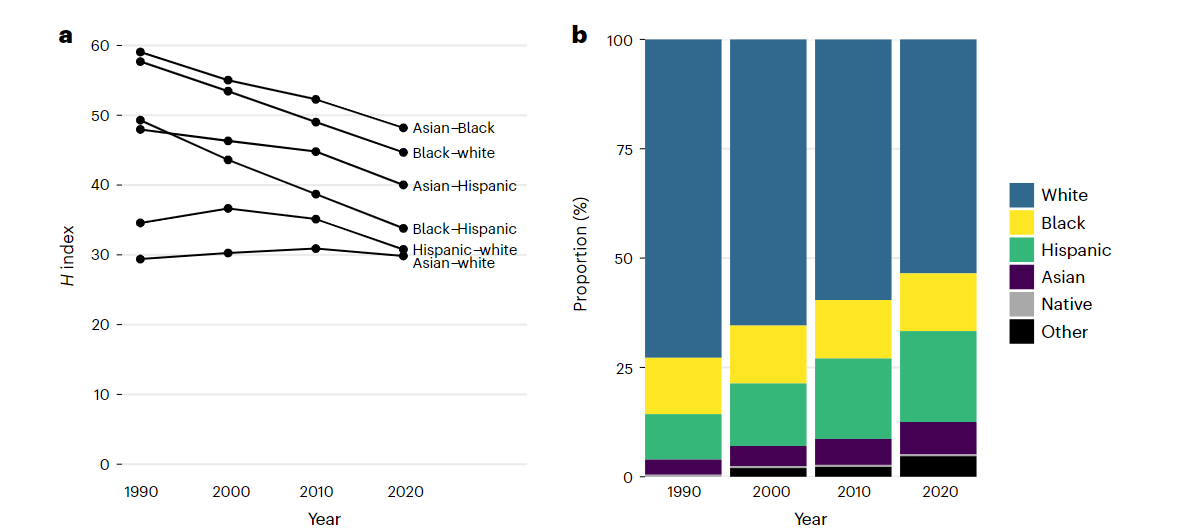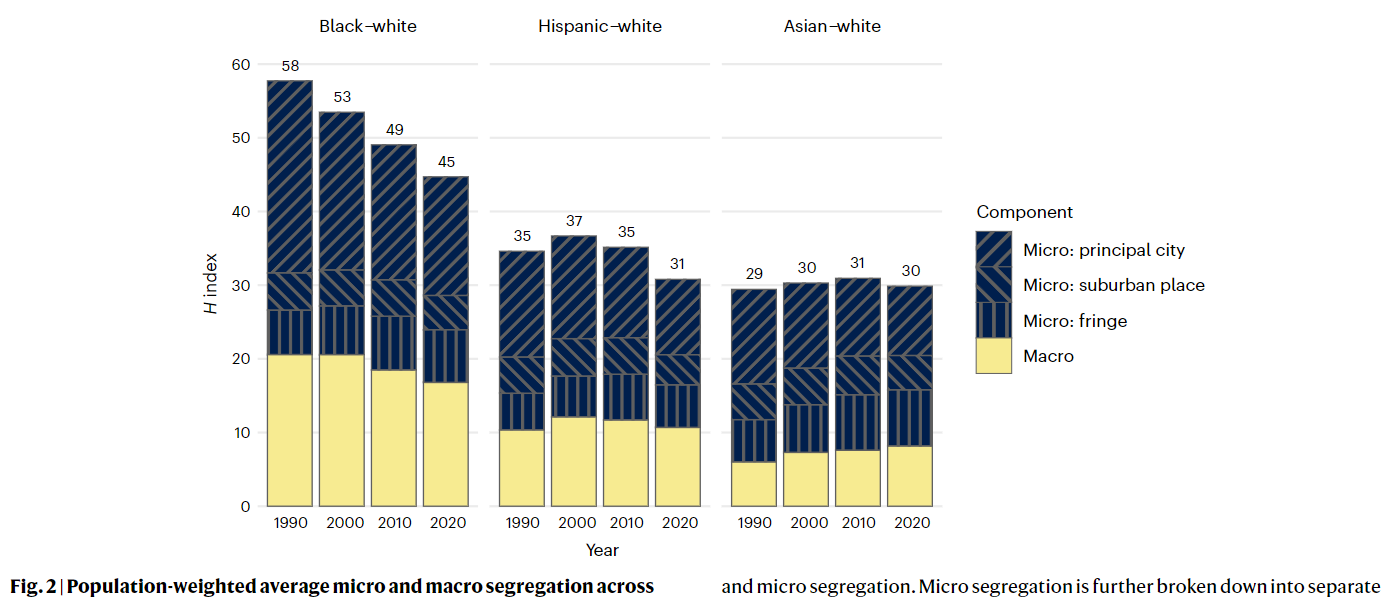Objective:
- Which racial groups are driving changes in segregation
- Where in the metropolitan area these changes are produced
Case:
Methodology:
- Theoretical foundation: spatial assimilation theory & place strafication theory
- Entropy-based segregation index: $H(T) = \frac{100}{E(T)}\sum_u \sum_g p_{ug} log \frac{p_{ug}}{p_u p_g}$
- Decomposition:
- $H(B) = H_{macro}(B) + H_{micro}(B)$, where $H_{macro}(B) = H(P)$, $H_{micro}(B) = \sum_{s=1}^{S} \frac{E(B_s)}{E(B)} p_s H(B_s)$
- game theory
Data Source: Open
- Block-level racial group counts: census through IPUMS NHGIS
Findings:
- Black-white segregation decreased from 58 to 45, while this is still an extremely high level of average segregation

- A large majority of the decrease is due to changes in the population distribution of the Black population; while the distribution of the white people acted in the opposite direction

- The large contributions of the Black population toward decreasing segregation are indeed due to population growth in the suburbs and fringe areas.
- There is also ongoing sorting within suburbs: for white people, both growth and decline in suburban places contributed toward increasing segregation


Coding Reference:




